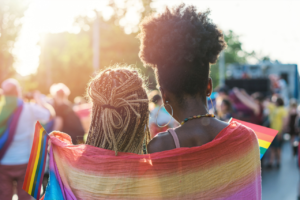In recent years, the challenges faced by Black LGBTQ+ youth in America have come into sharp focus. Reports from organizations like The Trevor Project and the Human Rights Campaign (HRC) reveal alarming statistics: 21% of Black trans, nonbinary, and questioning youth have attempted suicide in the past year, nearly half feelunsafe at school, and 64% have encountered transphobia. These numbers paint a stark picture of these young individuals’ daily struggles.
While racism, homophobia, and transphobia pose significant risks, familial and community support can significantly reduce the suicide risk among Black queer youth. However, the reports also reveal gaps in support, with many youths lacking supportive adults and facing rejection from family members and educators.
The climate of discrimination is aggravated by the constant stream of anti-LGBTQ+ legislation, contributing to increased harassment and hostility in schools. Tragic incidents like the death of Nex Benedict in Oklahoma emphasize the urgent need for change.
 Creating safe and inclusive spaces is crucial. Organizations like the Youth Empowerment Performance Project in Chicago highlight the importance of harm reduction methods and trauma-informed care. However, systemic barriers such as ID requirements for entry can further marginalize youth who are unable to update their IDs due to various reasons, including homelessness.
Creating safe and inclusive spaces is crucial. Organizations like the Youth Empowerment Performance Project in Chicago highlight the importance of harm reduction methods and trauma-informed care. However, systemic barriers such as ID requirements for entry can further marginalize youth who are unable to update their IDs due to various reasons, including homelessness.
The call to action is clear. Faith communities, non-LGBTQ+ organizations, and LGBTQ+ advocacy groups must work together to create spaces that fully embrace Black LGBTQ+ youth. This includes addressing barriers around race, providing culturally competent care, and fostering supportive relationships. Education and awareness are vital components, focusing on intersectional approaches to combatting discrimination. As we move forward, it’s essential to uplift the voices and experiences of Black LGBTQ+ youth, centering their needs and perspectives in all initiatives. By working collectively and inclusively, we can create a brighter and safer future for all Black LGBTQ+ individuals in America.
